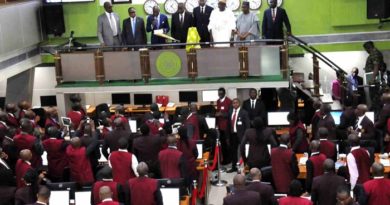World Bank links Lagos building collapses to poor regulation
The World Bank has attributed the frequent building collapse in Lagos State to gaps and loopholes in the permitting process and the use of unqualified professionals in the design and construction of buildings.
It also listed the absence of a legally adopted building design code, limited land available for development and lack of systems to ensure the quality of construction materials as well as other reasons buildings cave in regularly in the state.
The bank revealed this in a report on housing regulatory framework standards in sub-Saharan Africa.
According to the bank, only about 10 per cent of construction sites obtain permits, and even when permits are obtained, final construction can still deviate from their requirements.
A report by the Lagos State branch of the Building Collapse Prevention Guild early this year revealed that 115 incidents of building collapse occurred in the capital city in the last 10 years.
The report partly read, “Based on past studies and consultations with the government and key stakeholders, the main drivers for building collapse in Lagos are the absence of a legally adopted building design code in Lagos State. This contributes to poor quality design and construction, increasing vulnerability and reducing building design life.
“Another reason is the limited land available for development, combined with a lack of risk-informed site selection. As land in Lagos is scarce, some builders, particularly the poor, are forced to choose risky sites for construction. In addition, site-specific risk information is not readily available.
“Lack of systems to ensure the quality of construction materials: Materials in the marketplace often do not meet the Nigerian national standards, which include minimum material standards, certification mechanisms, and testing requirements. In addition, material testing facilities in Lagos have limited capacity.”
According to the bank, as a result of a failure in regulation, building collapses occur during the rainy season due to construction on inappropriate sites and/or flood damage to foundations and structures.
It also stressed that the building control authority was under-resourced and lacked adequate transportation and equipment to carry out effective site monitoring and inspection.
To resolve this, the World Bank proposed collaboration between the government and private sector as well as bottom-up outreach to inform communities about the risks associated with low-quality construction and design.




